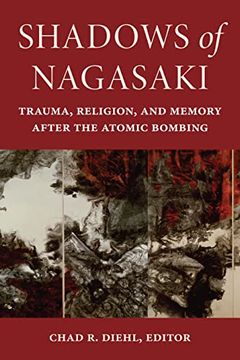Share
Shadows of Nagasaki: Trauma, Religion, and Memory After the Atomic Bombing (World war ii: The Global, Human, and Ethical Dimension) (in English)
Diehl Chad R. (Editor)/ Burke-Gaffney Brian (Contributor)/ Gasha Anna (Contributor)/ Haynes Anthony Richard (Contributor)/ Mason Michele M. (Contributor) (Author)
·
Fordham University Press
· Paperback
Shadows of Nagasaki: Trauma, Religion, and Memory After the Atomic Bombing (World war ii: The Global, Human, and Ethical Dimension) (in English) - Diehl Chad R. (Editor)/ Burke-Gaffney Brian (Contributor)/ Gasha Anna (Contributor)/ Haynes Anthony Richard (Contributor)/ Mason Michele M. (Contributor)
$ 29.39
$ 39.89
You save: $ 10.50
Choose the list to add your product or create one New List
✓ Product added successfully to the Wishlist.
Go to My WishlistsIt will be shipped from our warehouse between
Friday, May 24 and
Tuesday, May 28.
You will receive it anywhere in United States between 1 and 3 business days after shipment.
Synopsis "Shadows of Nagasaki: Trauma, Religion, and Memory After the Atomic Bombing (World war ii: The Global, Human, and Ethical Dimension) (in English)"
A critical introduction to how the Nagasaki atomic bombing has been remembered, especially in contrast to that of Hiroshima. In the decades following the atomic bombing of Nagasaki on August 9, 1945, the city's residents processed their trauma and formed narratives of the destruction and reconstruction in ways that reflected their regional history and social makeup. In doing so, they created a multi-layered urban identity as an atomic-bombed city that differed markedly from Hiroshima's image. Shadows of Nagasaki traces how Nagasaki's trauma, history, and memory of the bombing manifested through some of the city's many post-atomic memoryscapes, such as literature, religious discourse, art, historical landmarks, commemorative spaces, and architecture. In addition, the book pays particular attention to how the city's history of international culture, exemplified best perhaps by the region's Christian (especially Catholic) past, informed its response to the atomic trauma and shaped its postwar urban identity. Key historical actors in the volume's chapters include writers, Japanese- Catholic leaders, atomic-bombing survivors (known as hibakusha), municipal officials, American occupation personnel, peace activists, artists, and architects. The story of how these diverse groups of people processed and participated in the discourse surrounding the legacies of Nagasaki's bomb-ing shows how regional history, culture, and politics--rather than national ones--become the most influential factors shaping narratives of destruction and reconstruction after mass trauma. In turn, and especially in the case of urban destruction, new identities emerge and old ones are rekindled, not to serve national politics or social interests but to bolster narratives that reflect local circumstances.

